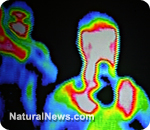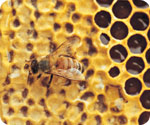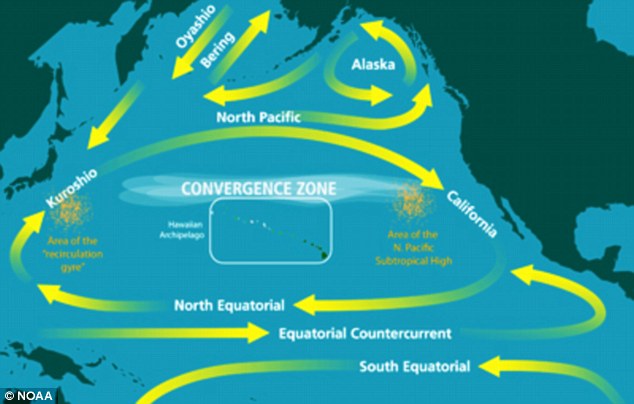Never in the history of humankind has the planet been confronted with such a grave set of circumstances. Fukushima represents all that can go wrong when scientific applications and technological advancement within a crude industrial context have gone awry. Unfortunately, given the many trajectories that numerous fields of technological innovation are currently on, Fukushima and the BP Gulf oil spill of 2012 may only be the beginning of an accelerating period of technospheric breakdown which will plague the Earth.
“Quite purposefully, no one ever stopped to consider the obvious and far-reaching ramifications of constructing 55 nuclear reactors on the most seismically active piece of property on planet Earth! And, that doesn’t count another 12 reactors in various stages of planning or development.”
Japan has clearly shown that this disaster is way beyond their ability to manage and capacity to address in any meaningful way. Their entire culture seems to ensure that the real problems will be constantly swept under the rug. The problem this time around is that there may be no rug soon to sweep it under.
More...
 It's not just Fukushima, though that may be enough. The northern hemisphere especially had been inundated with radioactive fallout by atmospheric nuclear weapons testing from 1950 to 1963. The Nevada testing area alone produced 1200 nuclear explosions that emitted radioactive particles across the USA.
It's not just Fukushima, though that may be enough. The northern hemisphere especially had been inundated with radioactive fallout by atmospheric nuclear weapons testing from 1950 to 1963. The Nevada testing area alone produced 1200 nuclear explosions that emitted radioactive particles across the USA.
 Environmental News Archive
Environmental News Archive



 The amount of radioactive materials released in the first days of the Fukushima nuclear disaster was almost two and a half times the initial estimate by Japanese safety regulators, the operator of the crippled plant said in a report released on Thursday.
The amount of radioactive materials released in the first days of the Fukushima nuclear disaster was almost two and a half times the initial estimate by Japanese safety regulators, the operator of the crippled plant said in a report released on Thursday. This media silence is a devastating one—so much so that if described properly it would curdle one’s soul. It is so disgusting that the only image that compares is the Nazi gas chamber, but this one is big enough for 40 million people.
This media silence is a devastating one—so much so that if described properly it would curdle one’s soul. It is so disgusting that the only image that compares is the Nazi gas chamber, but this one is big enough for 40 million people.  Of particular interest was Ingram's extensive research on Monsanto's Roundup herbicide, which began several years ago when hundreds of Ingram's hives had died. He later determined that Roundup sprayings near his property were to blame, which prompted him to actively research the subject and closely monitor his hives in conjunction with this research from that point onward.
Of particular interest was Ingram's extensive research on Monsanto's Roundup herbicide, which began several years ago when hundreds of Ingram's hives had died. He later determined that Roundup sprayings near his property were to blame, which prompted him to actively research the subject and closely monitor his hives in conjunction with this research from that point onward. If the world can be seen in a grain of sand, watch out. As Wisconsinites are learning, there’s money (and misery) in sand -- and if you’ve got the right kind, an oil company may soon be at your doorstep.
If the world can be seen in a grain of sand, watch out. As Wisconsinites are learning, there’s money (and misery) in sand -- and if you’ve got the right kind, an oil company may soon be at your doorstep. One of the biggest problems is not simply that there is a massive cover-up related to what is really going on at Fukushima; it is that the media itself is to blame for its lack of front page coverage of what is taking place at Fukushima as the situation has become even more critical.
One of the biggest problems is not simply that there is a massive cover-up related to what is really going on at Fukushima; it is that the media itself is to blame for its lack of front page coverage of what is taking place at Fukushima as the situation has become even more critical.
 No farmer in their right mind wants to poison pollinators. When I spoke with one Iowa corn farmer in January and told him about the upcoming release of a Purdue study confirming corn as a major pesticide exposure route for bees, his face dropped with worn exasperation. He looked down for a moment, sighed and said, "You know, I held out for years on buying them GE [genetically modified or engineered] seeds, but now I can't get conventional seeds anymore. They just don't carry 'em."
No farmer in their right mind wants to poison pollinators. When I spoke with one Iowa corn farmer in January and told him about the upcoming release of a Purdue study confirming corn as a major pesticide exposure route for bees, his face dropped with worn exasperation. He looked down for a moment, sighed and said, "You know, I held out for years on buying them GE [genetically modified or engineered] seeds, but now I can't get conventional seeds anymore. They just don't carry 'em." The last 60 years have been the hottest in Australasia for a millennium and cannot be explained by natural causes, according to a new report by scientists that supports the case for a reduction in manmade carbon emissions.
The last 60 years have been the hottest in Australasia for a millennium and cannot be explained by natural causes, according to a new report by scientists that supports the case for a reduction in manmade carbon emissions.






























